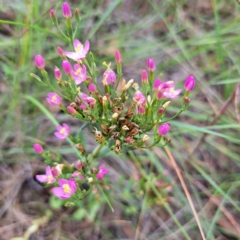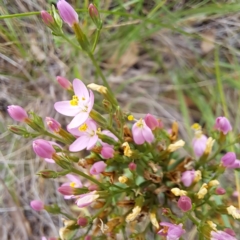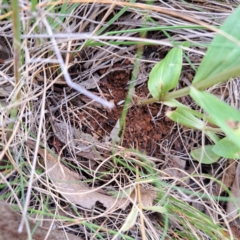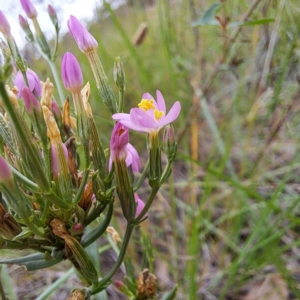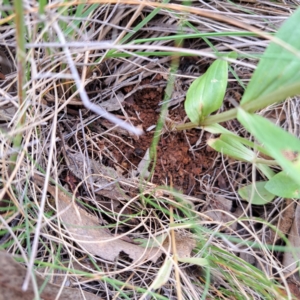Branched Centaury at The Fair, Watson
Identification history
| Centaurium tenuiflorum | 27 Feb 2024 | mcosgrove | ||
| Centaurium tenuiflorum | 16 Jan 2024 | abread111 |
Identify this sighting
Please Login or Register to identify this sighting.
User's notes
No rosette at base of stems, magenta flowers, branches not widely spreading, calyx about 2/3rds the length of the corolla tube at flowering
9 comments
natureguy
wrote:
17 Jan 2024
I'm still not convinced here, I haven't had too much time to do any more digging so haven't come up with much else so far unfortunately. Whilst it pains me that there isn't a basal rosette here, I'd politely disagree about the flower colour, it still seems very pale to me. When "magenta" is stated this is what comes to mind, Centaurium tenuiflorum (Branched Centaury) . Personally when I've seen this in the field I've found the colour difference quite striking, but again I haven't found any more info on how diagnostic this is yet (other than the Vicflora key). Again, for this plant the tube is clearly quite a lot longer than the calyx which further points towards C. erythraea.
waltraud
wrote:
17 Jan 2024
I think colour is not a good indicator; both Centaurium species recorded in ACT seem to have a wide range of colour from white, pale pink to brilliant pink (or magenta).
Tapirlord
wrote:
17 Jan 2024
I was about to say the same thing Waltraud! There are very few times when flower colour alone is enough to settle an ID, and given that this genus is infamous for producing white flowered forms, I am hesitant to use this as a strong ID feature. However, Luke is correct regarding the length of the corolla tube, it should be equal or shorter in C.tenuiflorum, whereas it is longer or equal here. Then, there is of course the issue of the basal rosette
Tapirlord
wrote:
17 Jan 2024
Basal rosette of leaves absent or weakly developed; corolla lobes 3–5 mm long; calyx mostly 6–8 mm long, usually at least two-thirds the length of corolla tube
Basal rosette of leaves present and distinct; corolla lobes 5–6 mm long; calyx mostly 4–6 mm long, less than two-thirds the length of corolla tube
Basal rosette of leaves present and distinct; corolla lobes 5–6 mm long; calyx mostly 4–6 mm long, less than two-thirds the length of corolla tube
Tapirlord
wrote:
17 Jan 2024
One final thing :). I have sent a request for some help to a contact of mine affiliated with UNSW and the national herbarium of NSW. Hopefully he will shed some light on this.
natureguy
wrote:
17 Jan 2024
Thanks Ciaran, appreciate the effort here, am awaiting the final decision.
abread111
wrote:
17 Jan 2024
I did look at VicFlora and NSW PlantNet and thought the 2/3 length of the tube for the calyx at flowering is spot on for the pic of the flower side on, where it is clearest. And the colour is tricky in photos - it was clearly darker than the Common Centaury plants which were more abundant in the area. The colour led me to this little group of plants. So it was striking. And the branching pattern is different - not so wide spreading as in the CC plants.
Please Login or Register to comment.
Nearby sightings
1 2
Location information
- Coordinates 149.171394-35.225822
- Altitude 655.0m
- Maps Mount Majura The Fair, Watson
- Places Watson, ACT
Sighting information
- 1 - 3 Abundance
- 16 Jan 2024 03:14 PM Recorded on
- abread111 Recorded by
-
Collections
Discussions.
Additional information
- 10cm to 30cm Plant height
- True In flower
Species information
- Centaurium tenuiflorum Scientific name
- Branched Centaury Common name
- Not Sensitive
- Exotic
- Minor Weed or Pest
- Up to 832.8m Recorded at altitude
- Machine learning
-
In flower
- External link More information
Record quality
- Images or audio
- More than one media file
- Confirmed by an expert moderator
- Nearby sighting(s) of same species
- GPS evidence of location
- Description
- Additional attributes

